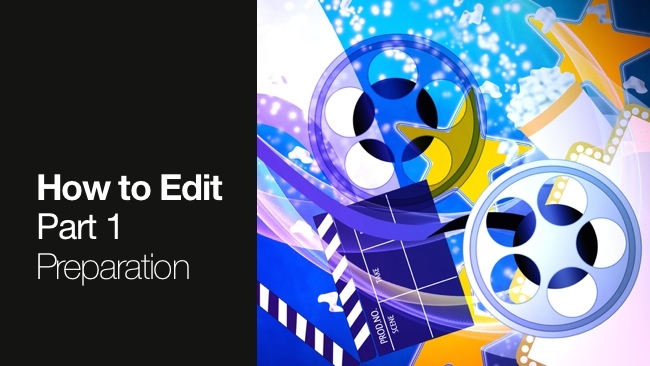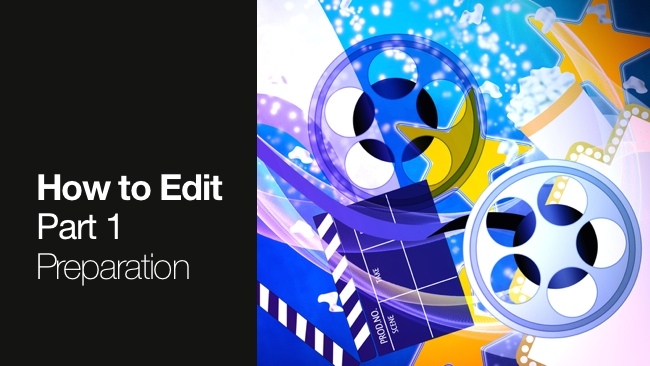
 Editing
Editing
RedShark Replay: Here's another chance to read part one of our major guide to editing from start to finish, containing all the practical stuff you need to know for a sucessful production.
There is something magical about editing. It's where the all the elements of production come together and a film is born. Editing, though, is also a detailed and lengthy process that can appear very complicated. After fifteen years of working in post production, I've experienced the pleasure (and horrors) of cutting everything from celluloid film to video tape, and on to a number of digital platforms. Yet despite the technical differences between all these formats the core heart of the editing process has remained generally the same. The goal of this article is to share my process and hopefully uncomplicate a good amount of the leg work required in the post production process.
Before you jump into editing, here is a short list of materials you should have on hand:
- Non-Linear Editing Software (NLE): This is where you will be doing the cutting.
- Hard drive for Media: Digital files eat up a lot of gigabytes and bandwidth. Playing back the media is also murder on drives, so you should have a dedicated large capacity internal or external hard drive that is fast enough to play back the media.
- Index cards (or digital equivalent): This will help you lay your scenes and story.
- Notebook (or digital equivalent): For taking notes and logging your footage.
Organize
Just as you wouldn’t want piles of distracting, unlabelled clutter laying about your work environment in real life, you’re going to want to make sure that your virtual workspace is equally tidy. This is going to reduce an endless number of headaches throughout the entire process.
It is probably the second most time consuming part of the editing task (I think fine cuts are the most laborious), but the effort spent here will pay dividends later in the process. These days even a professional editor finds themselves working on projects without assistants, and if you start working in post production it's likely you will start as an assistant, so it's good to cut your chops with the unsexy house cleaning.
There are generally two parts to organizing your project. The back-end is where and how the media is kept on your hard drives. The front-end, or virtual workspace is how your media is grouped and labeled in racks and bins within your NLE.
As you’ll see these two systems don’t have to mirror each other, and in most cases it will be more logical if they don’t. This is because the back-end management is all about strict organization of files, a purely technical system for telling your computer and NLE where all the media is stored. On the front-end, your NLE virtual workspace should be organized in a logical way that helps communicate the content of each clip to you, the human user.
NOTE: Traditionally, in the professional world, this sort of work is done by Assistant and Apprentice Editors. If you are going to work with an assistant make sure the both of you are on the same page when it comes to the organizational needs of your film. Has your assistant worked with the type of media used to shoot your project? Do they have enough experience with the NLE you're using to know how the system interacts with media? Has your assistant ever worked on a documentary or narrative project before? I also recommend that once you find a great assistant, keep them working, be it for you or someone else!
Organise at the browser level
The back-end is how the digital materials are organized and labeled on the computer’s Finder/Browser. This is simply to create a space where you can easily keep track of all the camera footage, location audio, sound effects, music, and graphics you plan on using in your project.
A good first practice is to create a folder with the project's name on your media drive.
Inside this folder is where you'll keep all your assets organized. Create some sub-folders to help organize specific types of files, such as “camera masters,” “edit media,” “graphics,” “sound effects,” etc. Think of these folders as a staging area for your media before it gets imported into your NLE.
When you're done you should have a folder structure that looks something like this:
MY PROJECT /
MASTER REELS
REEL 1, REEL 2
EDIT MEDIA
SFX
ADR
GFX
MUSIC
VO
PAPERWORK
As you make additional music selections, pull more sound effects, and create more graphics you will add them to this workspace. Keeping all your materials together in a single space makes it easier to verify that you have everything that was shot, and to create a system that will allow you to easily go back and find specific clips if something goes offline or missing. Think of this as creating a footage catalog that you will be accessing through your editing software.
Keeping track of your footage is vital during an edit. To do this you're going to want to organize your footage by each card / tape it was shot on. Each card, hard dive transfer or tape should be labeled with a unique 'reel name'. This term is a throw-back to the film days but is still helpful in organizing your footage. There’s no set formula for how to name your reels but generally I’ve used one of two methods:
Organize by Date, such as naming the master folder 20140726_A01; would be the first card (01) shot on camera A, that was filmed on July 26, 2014.
Alternatively, and my most commonly used method, is to use a prefix short name for your project (in this case RSN for our fictional documentary on the history of Red Shark News) followed by a running number. In this case all the files from your first card would be labeled “RSN101" for the first reel, “RSN102" for the second etc etc.
By the time you're finished organizing all my media on my drive, it’ll typically look like this:
MASTER REELS
RSN101
RSN102
RSN103
RSN104
This might seem complicated at first, but after organizing one or two projects you’ll start working out your own system that works best for the type of work that you do. The important thing is that once you start a system you maintain it consistently. As long as there are no major complications, once you've road mapped a workflow, stick to it. You can always improve your workflow on the next project.
Further Reading
Tags: Post & VFX


Comments